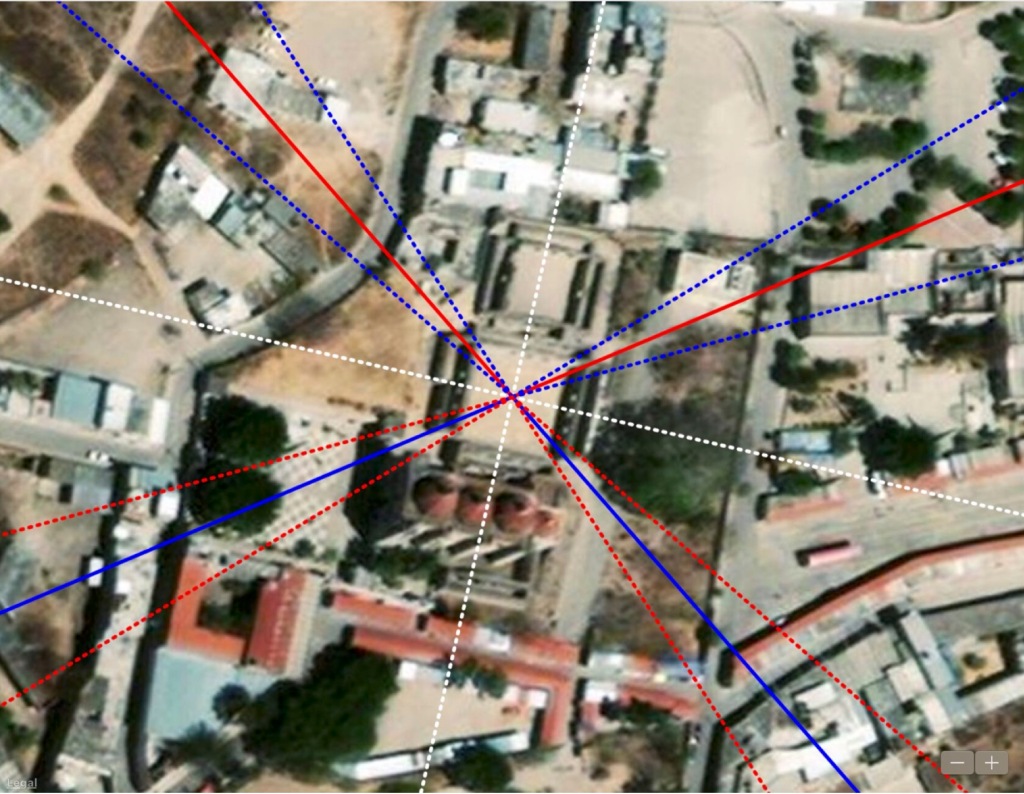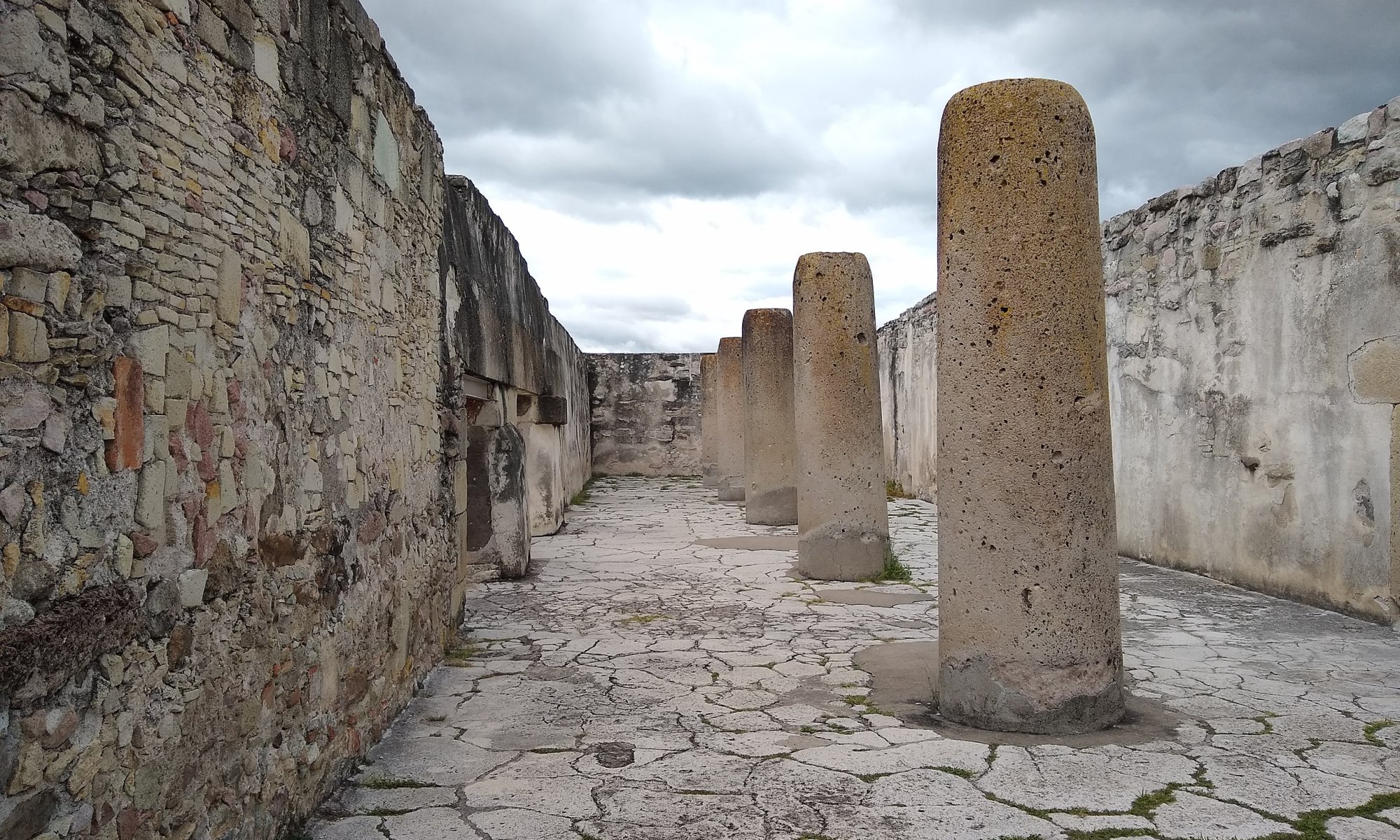In 1674, a Catholic priest, Francisco de Burgoa reported the discovery of a subterranean labyrinth under the ruins of Mitla. Immense stone chambers were said to extend many miles underground.
In 2022, a joint research expedition by the Mexican National Institute of History and Anthropology (INAH), the National Autonomous University of Mexico (UNAM) and the Association for Archaeological Research and Exploration (ARX) uncovered evidence of a large void under the Catholic Church. Electrical resistivity tomography revealed the void is connected to underground chambers extending west, north, and east of the church.
Site Alignment
Numerous places in Mesoamerica contain structures aligned in a direction roughly 17 degrees east of north – places such as Teotihuacan, Tenayuca, Xochicalco, Ekbalam, Altun Ha, Copan, Tikal, Uxmal, and Mitla.
No single compelling reason for their alignment exists within the mainstream archaeological community. In Before Atlantis, we propose that these sites were first established during the last ice age when, according to Charles Hapgood in his theory of earth crustal displacement, the North Pole was in Hudson Bay and Mexico would have had a temperate climate. It is our contention that what archaeologists have discovered about the more recent pre-Columbian people that lived there is but one chapter of a much more ancient history.
Overlaying current geometrical and astronomical alignments on a Google Earth image of the Church Group of structures at Mitla shows the site is not aligned to the cardinal directions (N-S-E-W), or to the sun (solstices) or moon (lunar standstills).

Displaying alignments relative to the Hudson Bay pole suggests the possibility that if the site was first established when the North Pole was in Hudson Bay the original structures would have been cardinally aligned N-S-E-W relative to the former pole.

Structures in the Columns Group would have been similarly aligned.

What makes this hypothesis compelling not only for Mitla but also for the other sites mentioned above is that it explains the alignment of all of them in a simple way.

In the next few months, the independently-funded joint research expedition hopes to continue its investigation of Mitla’s underground spaces. Click here and support one of the most important archeological discoveries in decades.
The image at the top of the article is courtesy Thayne Tuason/Creative Commons.



